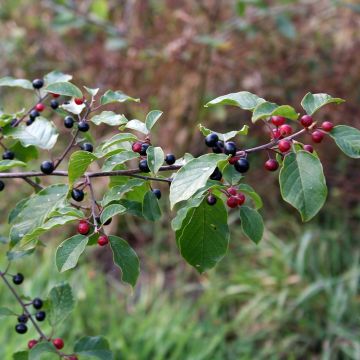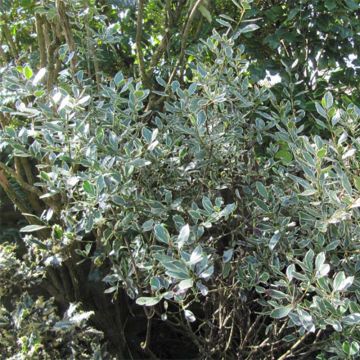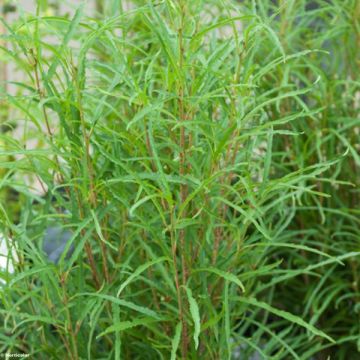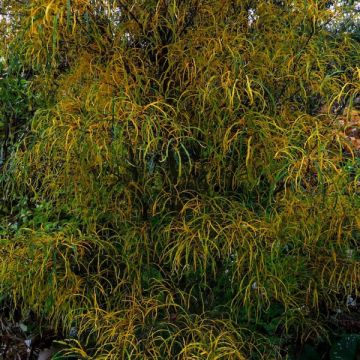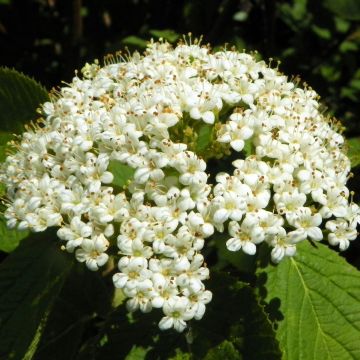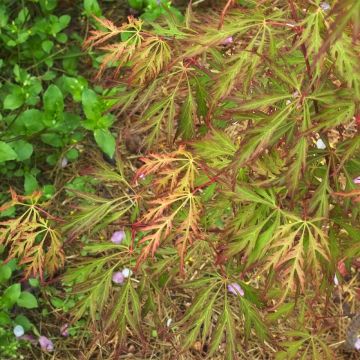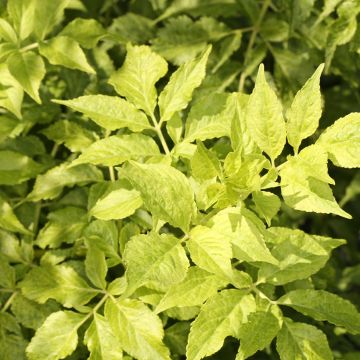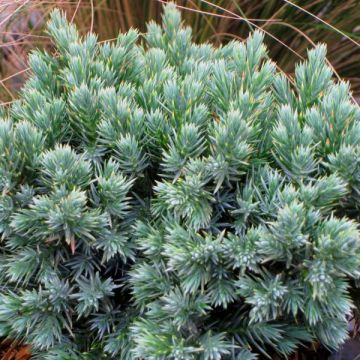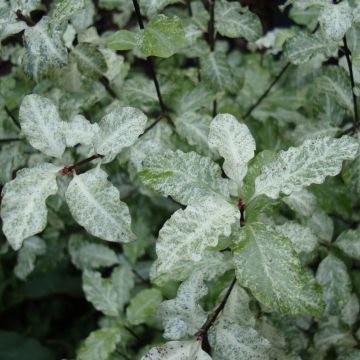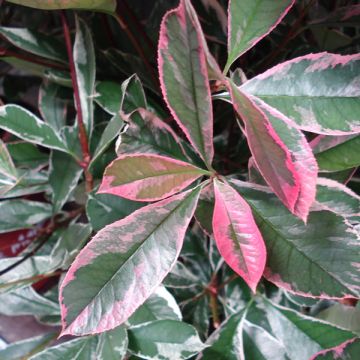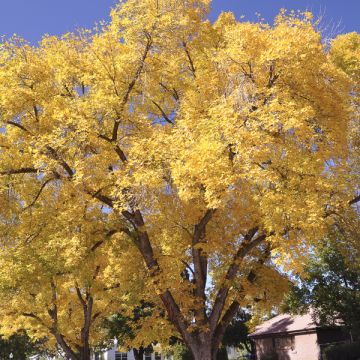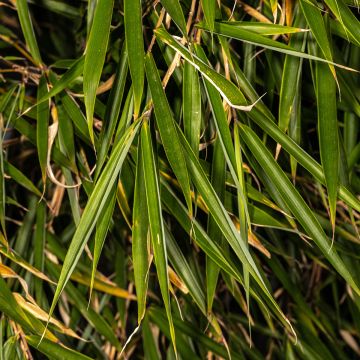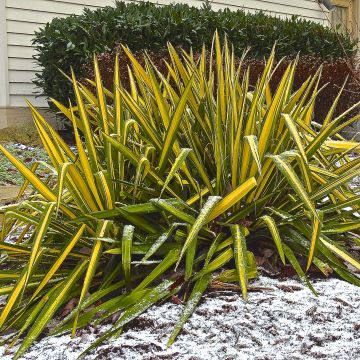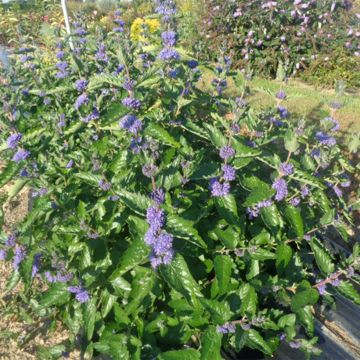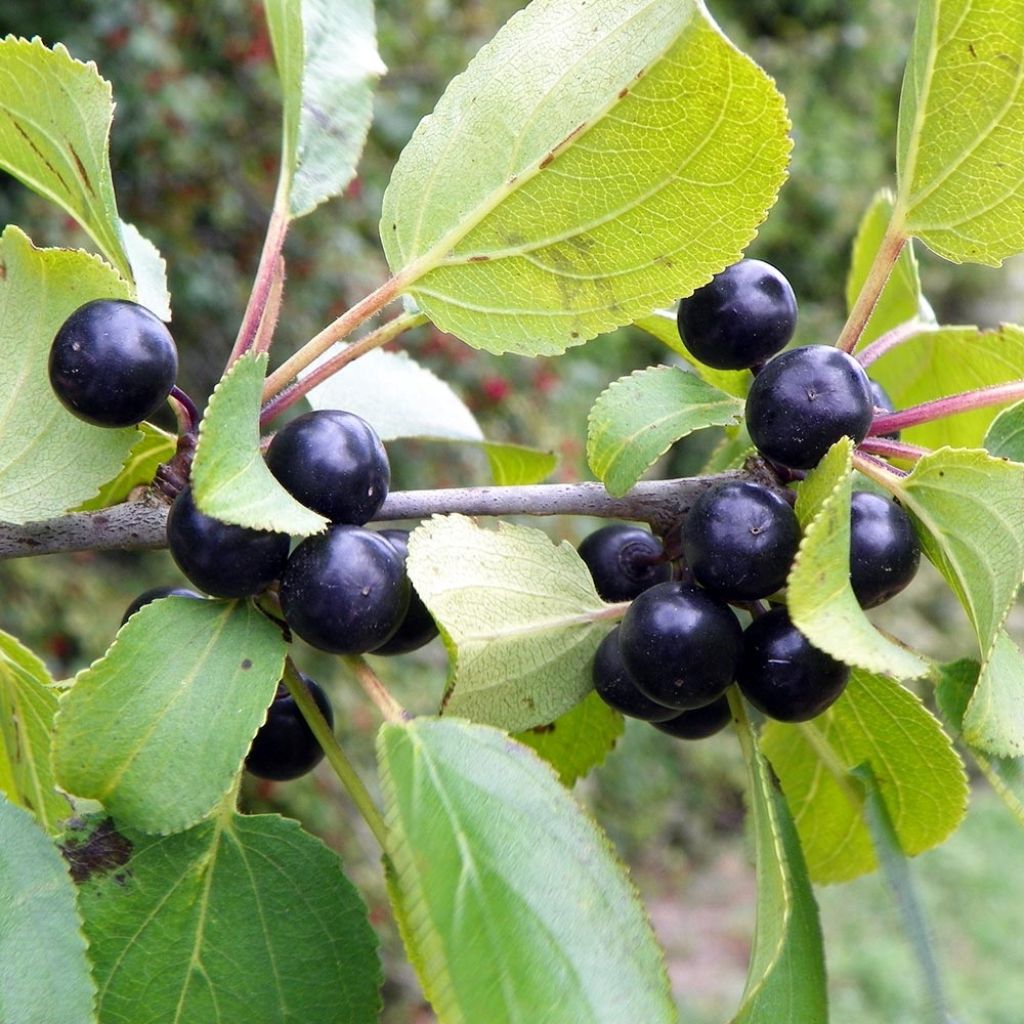

Rhamnus cathartica - European Buckthorn
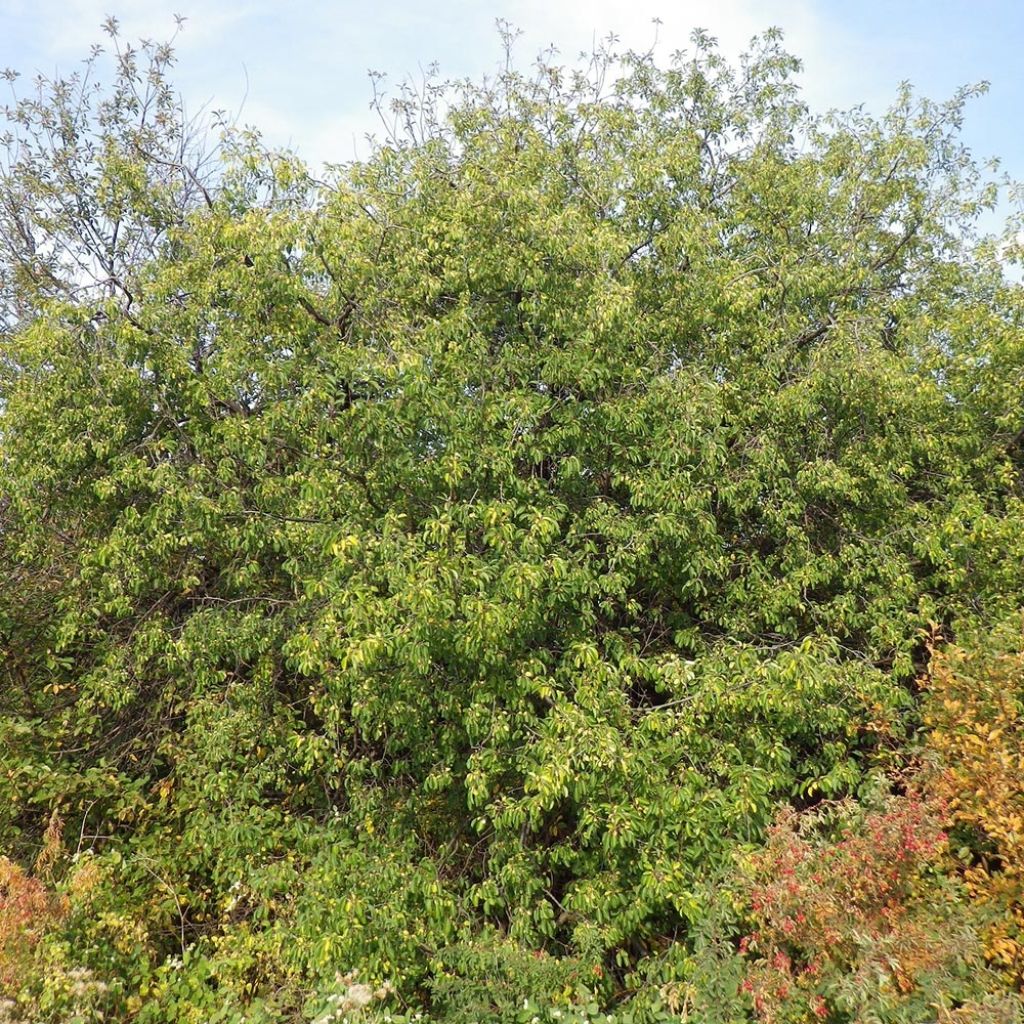

Rhamnus cathartica - European Buckthorn
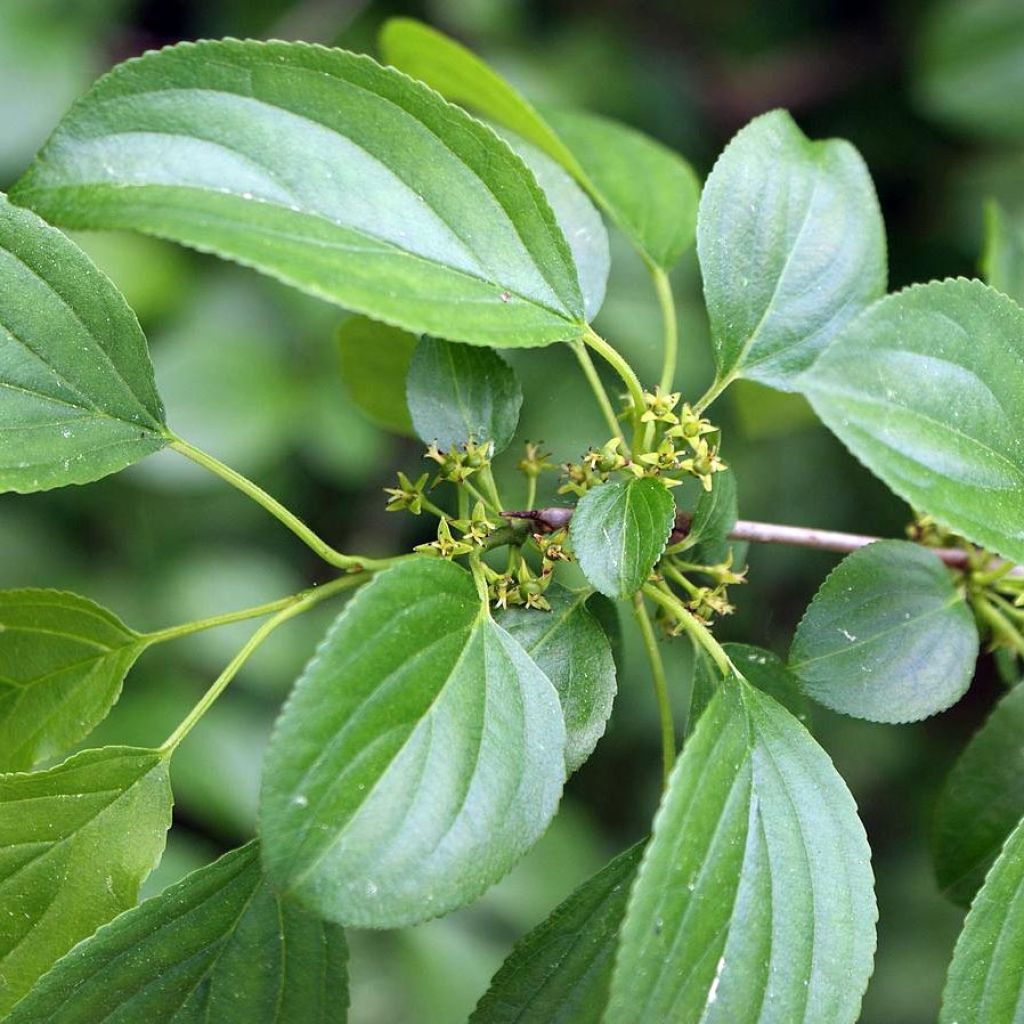

Rhamnus cathartica - European Buckthorn
Rhamnus cathartica - European Buckthorn
Rhamnus catharticus
Common Buckthorn, Purging Buckthorn, European Buckthorn, Buckthorn, Common Hart's Horn, French Berry, Rainberry Thorn, Rhineberry Thorn, Waythorn
A plant that shouldn't have survived because the carrier was very late with the delivery and the bush couldn't be planted immediately upon receipt. The customer service had informed me that it would be replaced if it didn't recover. But that was without counting on the vigor of this plant, which is quietly starting to leaf out at the moment.
Anaïs, 05/04/2024
Why not try an alternative variety in stock?
View all →This plant carries a 24 months recovery warranty
More information
We guarantee the quality of our plants for a full growing cycle, and will replace at our expense any plant that fails to recover under normal climatic and planting conditions.
From €5.90 for pickup delivery and €6.90 for home delivery
Express home delivery from €8.90.
Delivery to Corse prohibited: UE law prohibits the import of this plant from mainland France to Corse as part of the fight against Xylella fastidiosa. Please accept our sincere apologies.
More information

Does this plant fit my garden?
Set up your Plantfit profile →
Description
Rhamnus catharticus, also known as the Common Buckthorn or Purging Buckthorn, is a deciduous shrub native to and well suited to most European soils and climates. Forming a large shrub or sometimes a small tree, adorned with glossy foliage, this fearless thorny plant can be used to create natural hedgerows, and is extremely useful for the small fauna in our gardens, when associated with other local species. The shrub bears small inconspicuous but nectar-rich and pleasantly scented flowers in late spring, followed on female plants by small black fruits in autumn, sought after by birds.
The Common Buckthorn belongs to the Rhamnaceae family. This species is native to Europe, ranging from central England to the south of the Mediterranean, including France, Belgium, and Switzerland, and is also present in Asia, from western regions to the east, including Kyrgyzstan. It is a dioecious plant, meaning that there are male plants, which bear staminate flowers but no pistil, and female plants with pistillate flowers but no stamens. This species is found in thickets and small woodlands, often on clayey soils with a calcareous tendency, moist to dry.
It is a more or less bushy shrub reaching a height of 2 to 5 m (7 to 16ft) with a similar spread. It is capable of producing suckers and spreading laterally if conditions are met. Its bark is smooth, gray-brown on the trunks, becoming almost black with age. On older subjects, the bark peels off, revealing fresh, orange-colored bark. The branches, of a more grayish color, are more or less spiny, very long, and are often terminated by a spine. The deciduous foliage appears in spring and falls in autumn. It consists of entire, elliptical to ovate leaves, finely toothed, measuring 2.5 to 9 cm (1 to 4in) long and 1.2 to 3.5 cm (1in) wide. They are bright green, becoming yellow in autumn. Flowering occurs in May-June. It takes the form of small clusters of 5 to 10 tiny green-yellow flowers with 4 petals, which emit a sweet honey scent. On female plants, in the presence of male plants, oval fruits less than 1 cm (1in) long called drupes form, initially red and then black when ripe in October. The bark and fruits of the Common Buckthorn, once widely used in European pharmacopoeia, are now considered toxic to humans.
Plant and grow Rhamnus catharticus 'naturally', in a wild shrubby bed or in a country hedge. It is a must-have for naturalistic gardens, where it will accompany other native or more 'exotic' shrubs that are truly easy to grow: European honeysuckle (Lonicera xylosteum), Wayfaring Tree (Viburnum lantana), Black Lace elderberry (Sambucus Black Lace), Snowball Tree (Viburnum opulus Roseum), Winter Honeysuckle (Lonicera fragrantissima and L. tatarica), Rugosa rose (Rosa rugosa Rubra), Flowering Currant (Ribes sanguineum King Edward VII), and why not a grapevine (Vitis vinifera Purpurea)...the choice is vast!
Report an error about the product description
Rhamnus cathartica - European Buckthorn in pictures
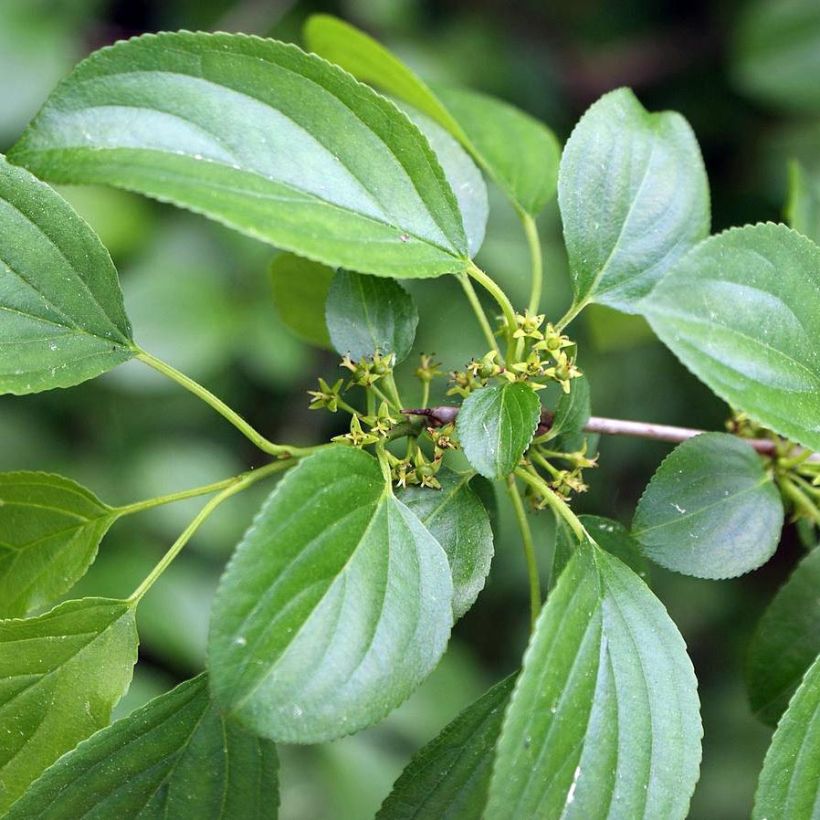

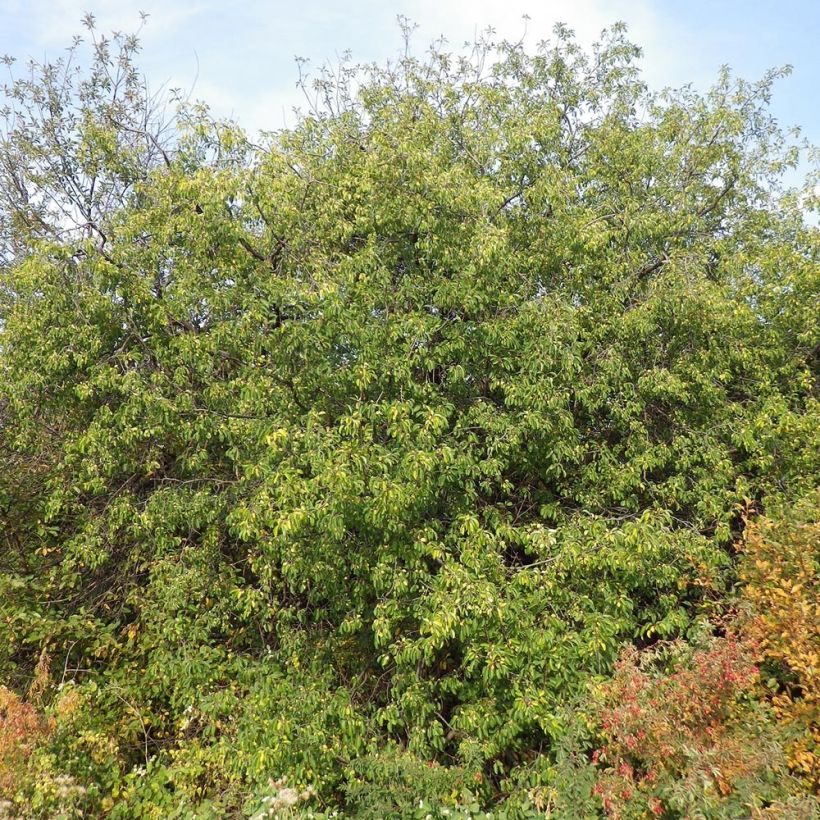

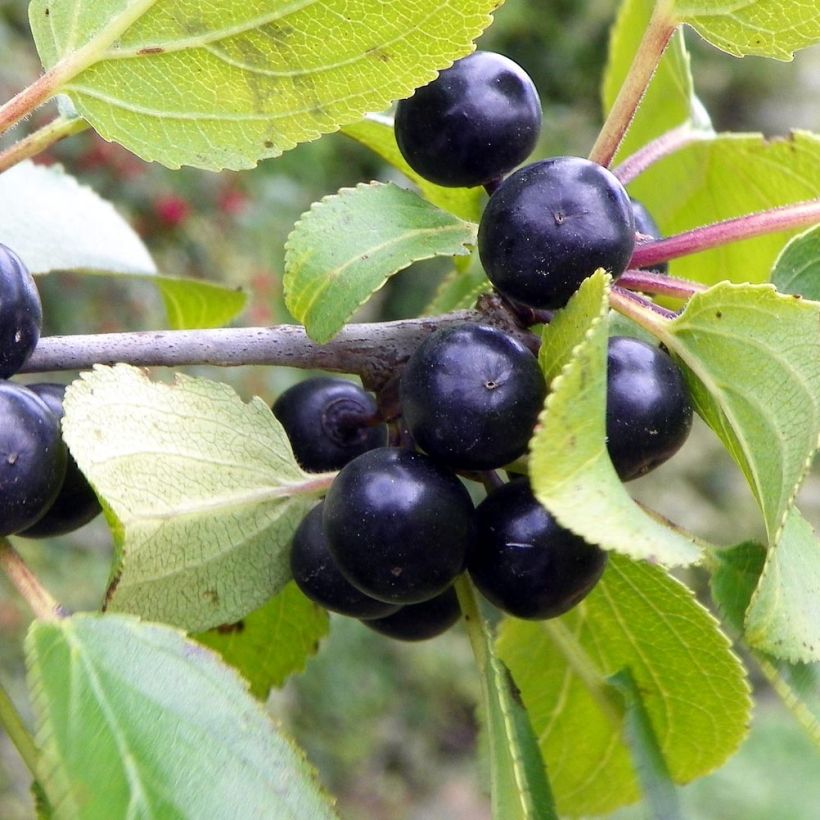

Plant habit
Flowering
Foliage
Botanical data
Rhamnus
catharticus
Rhamnaceae
Common Buckthorn, Purging Buckthorn, European Buckthorn, Buckthorn, Common Hart's Horn, French Berry, Rainberry Thorn, Rhineberry Thorn, Waythorn
Western Europe
Other Rhamnus
Planting and care
To plant your Rhamnus cathartica, choose a sunny to partially shaded (preferable in Mediterranean areas) exposure. Very hardy, it adapts to any good garden soil that is sufficiently deep, but prefers clayey and lime-rich soils. It is a water-efficient plant that can do without watering once established, even in dry summers, and requires little maintenance. If you plant it in spring, water regularly to ensure it becomes established. Pruning, if necessary, should be done before the buds start to grow at the end of winter. It may be necessary to remove certain shoots to limit overcrowding. It is free from diseases and not very susceptible to pest attacks in gardens.
Planting period
Intended location
Care
-
, onOrder confirmed
Reply from on Promesse de fleurs
Striking foliage shrubs
Haven't found what you were looking for?
Hardiness is the lowest winter temperature a plant can endure without suffering serious damage or even dying. However, hardiness is affected by location (a sheltered area, such as a patio), protection (winter cover) and soil type (hardiness is improved by well-drained soil).

Photo Sharing Terms & Conditions
In order to encourage gardeners to interact and share their experiences, Promesse de fleurs offers various media enabling content to be uploaded onto its Site - in particular via the ‘Photo sharing’ module.
The User agrees to refrain from:
- Posting any content that is illegal, prejudicial, insulting, racist, inciteful to hatred, revisionist, contrary to public decency, that infringes on privacy or on the privacy rights of third parties, in particular the publicity rights of persons and goods, intellectual property rights, or the right to privacy.
- Submitting content on behalf of a third party;
- Impersonate the identity of a third party and/or publish any personal information about a third party;
In general, the User undertakes to refrain from any unethical behaviour.
All Content (in particular text, comments, files, images, photos, videos, creative works, etc.), which may be subject to property or intellectual property rights, image or other private rights, shall remain the property of the User, subject to the limited rights granted by the terms of the licence granted by Promesse de fleurs as stated below. Users are at liberty to publish or not to publish such Content on the Site, notably via the ‘Photo Sharing’ facility, and accept that this Content shall be made public and freely accessible, notably on the Internet.
Users further acknowledge, undertake to have ,and guarantee that they hold all necessary rights and permissions to publish such material on the Site, in particular with regard to the legislation in force pertaining to any privacy, property, intellectual property, image, or contractual rights, or rights of any other nature. By publishing such Content on the Site, Users acknowledge accepting full liability as publishers of the Content within the meaning of the law, and grant Promesse de fleurs, free of charge, an inclusive, worldwide licence for the said Content for the entire duration of its publication, including all reproduction, representation, up/downloading, displaying, performing, transmission, and storage rights.
Users also grant permission for their name to be linked to the Content and accept that this link may not always be made available.
By engaging in posting material, Users consent to their Content becoming automatically accessible on the Internet, in particular on other sites and/or blogs and/or web pages of the Promesse de fleurs site, including in particular social pages and the Promesse de fleurs catalogue.
Users may secure the removal of entrusted content free of charge by issuing a simple request via our contact form.
The flowering period indicated on our website applies to countries and regions located in USDA zone 8 (France, the United Kingdom, Ireland, the Netherlands, etc.)
It will vary according to where you live:
- In zones 9 to 10 (Italy, Spain, Greece, etc.), flowering will occur about 2 to 4 weeks earlier.
- In zones 6 to 7 (Germany, Poland, Slovenia, and lower mountainous regions), flowering will be delayed by 2 to 3 weeks.
- In zone 5 (Central Europe, Scandinavia), blooming will be delayed by 3 to 5 weeks.
In temperate climates, pruning of spring-flowering shrubs (forsythia, spireas, etc.) should be done just after flowering.
Pruning of summer-flowering shrubs (Indian Lilac, Perovskia, etc.) can be done in winter or spring.
In cold regions as well as with frost-sensitive plants, avoid pruning too early when severe frosts may still occur.
The planting period indicated on our website applies to countries and regions located in USDA zone 8 (France, United Kingdom, Ireland, Netherlands).
It will vary according to where you live:
- In Mediterranean zones (Marseille, Madrid, Milan, etc.), autumn and winter are the best planting periods.
- In continental zones (Strasbourg, Munich, Vienna, etc.), delay planting by 2 to 3 weeks in spring and bring it forward by 2 to 4 weeks in autumn.
- In mountainous regions (the Alps, Pyrenees, Carpathians, etc.), it is best to plant in late spring (May-June) or late summer (August-September).
The harvesting period indicated on our website applies to countries and regions in USDA zone 8 (France, England, Ireland, the Netherlands).
In colder areas (Scandinavia, Poland, Austria...) fruit and vegetable harvests are likely to be delayed by 3-4 weeks.
In warmer areas (Italy, Spain, Greece, etc.), harvesting will probably take place earlier, depending on weather conditions.
The sowing periods indicated on our website apply to countries and regions within USDA Zone 8 (France, UK, Ireland, Netherlands).
In colder areas (Scandinavia, Poland, Austria...), delay any outdoor sowing by 3-4 weeks, or sow under glass.
In warmer climes (Italy, Spain, Greece, etc.), bring outdoor sowing forward by a few weeks.

































